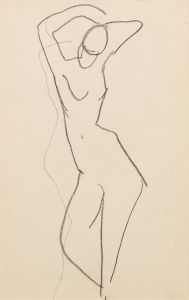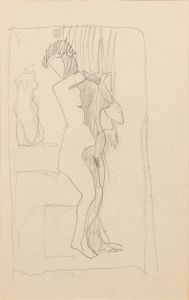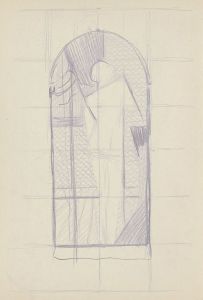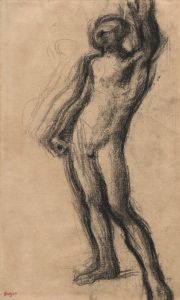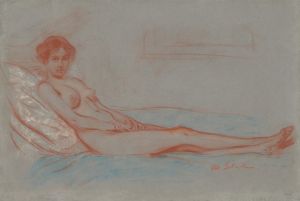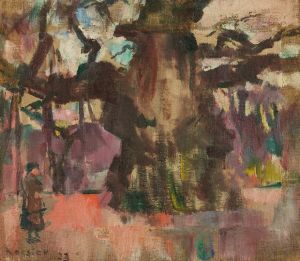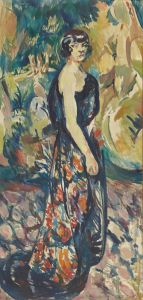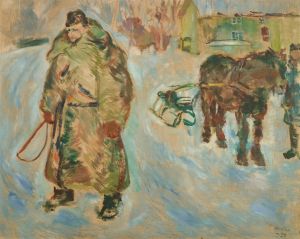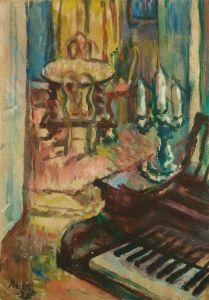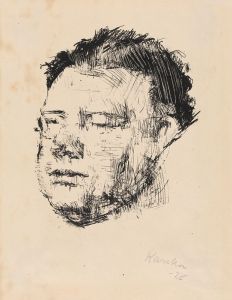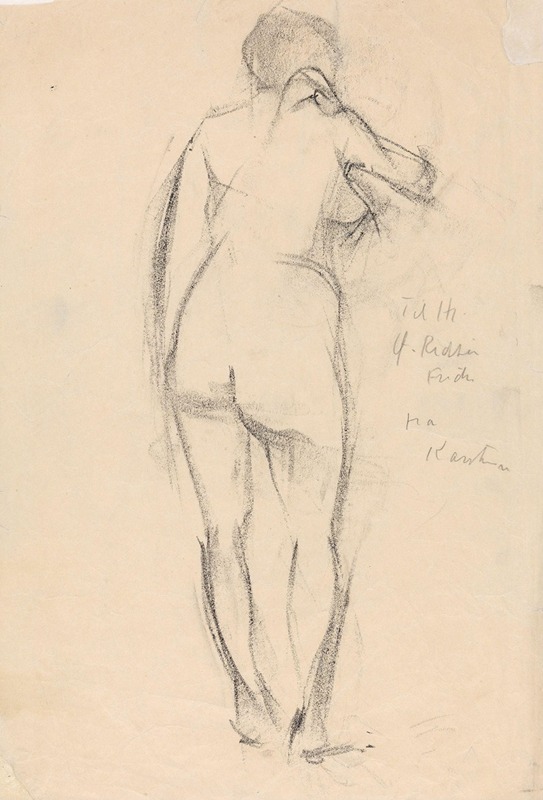
Stående ryggvendt kvinneakt
A hand-painted replica of Ludvig Karsten’s masterpiece Stående ryggvendt kvinneakt, meticulously crafted by professional artists to capture the true essence of the original. Each piece is created with museum-quality canvas and rare mineral pigments, carefully painted by experienced artists with delicate brushstrokes and rich, layered colors to perfectly recreate the texture of the original artwork. Unlike machine-printed reproductions, this hand-painted version brings the painting to life, infused with the artist’s emotions and skill in every stroke. Whether for personal collection or home decoration, it instantly elevates the artistic atmosphere of any space.
Ludvig Karsten was a prominent Norwegian painter known for his expressive style and vibrant use of color. One of his notable works is "Stående ryggvendt kvinneakt," which translates to "Standing Nude Woman Seen from the Back." This painting exemplifies Karsten's ability to capture the human form with both sensitivity and boldness, a characteristic feature of his artistic oeuvre.
Karsten was born on May 8, 1876, in Oslo, Norway, and he became a significant figure in the early 20th-century Scandinavian art scene. He was associated with the Expressionist movement, which emphasized the expression of emotional experience rather than physical reality. His works often reflect a deep engagement with color and form, influenced by both French Impressionism and Post-Impressionism, as well as the German Expressionists.
"Stående ryggvendt kvinneakt" is a testament to Karsten's skill in depicting the human body with a sense of immediacy and intimacy. The painting features a nude woman standing with her back to the viewer, a pose that invites contemplation of the human form in its natural state. The choice of a rear view allows Karsten to focus on the contours and lines of the body, emphasizing the play of light and shadow across the skin. This approach highlights his interest in the physicality and presence of the human figure, a recurring theme in his work.
Karsten's use of color in this painting is particularly noteworthy. He employs a rich palette to create a sense of depth and vitality, using contrasting hues to bring the figure to life. The background is often rendered in softer tones, allowing the figure to stand out prominently. This technique not only draws attention to the subject but also creates a dynamic interaction between the figure and its surroundings.
Throughout his career, Karsten was known for his ability to convey emotion through his paintings. In "Stående ryggvendt kvinneakt," the viewer can sense a quiet introspection in the pose of the figure, as if she is lost in thought or contemplation. This emotional depth is a hallmark of Karsten's work, reflecting his belief in the power of art to communicate the complexities of human experience.
Karsten's influence extended beyond Norway, as he spent significant periods in Paris and Berlin, where he interacted with other leading artists of his time. His exposure to different artistic movements and styles enriched his work, allowing him to develop a unique voice that resonated with both contemporary audiences and future generations.
Despite his contributions to the art world, Karsten's life was marked by personal struggles, and he often faced criticism for his unconventional approach. Nevertheless, his work has endured, and he is remembered as a pioneering figure in Norwegian art. "Stående ryggvendt kvinneakt" remains an important piece within his body of work, exemplifying his mastery of form, color, and emotional expression.
In summary, Ludvig Karsten's "Stående ryggvendt kvinneakt" is a significant work that captures the essence of his artistic vision. Through his skillful use of color and form, Karsten presents a compelling portrayal of the human figure, inviting viewers to engage with the emotional and physical dimensions of his art.





